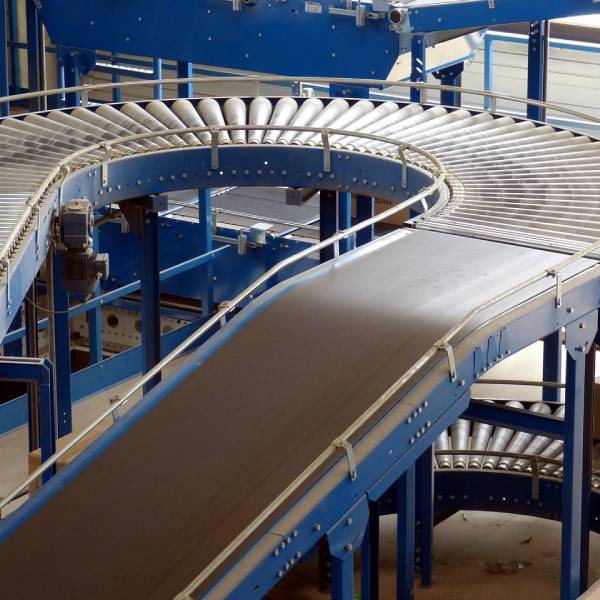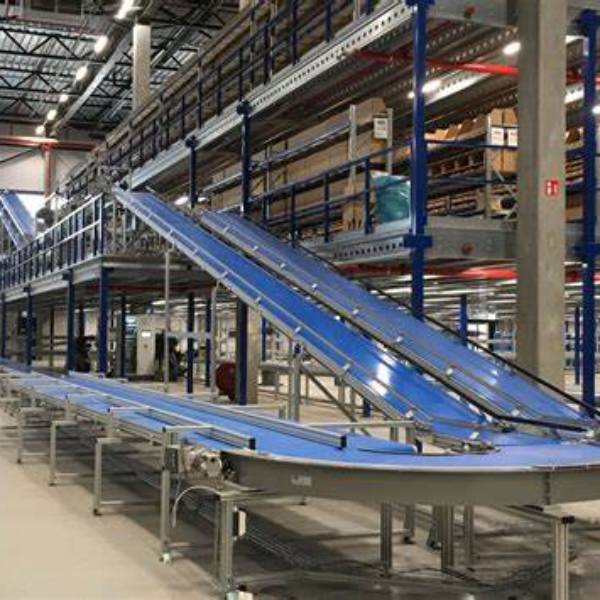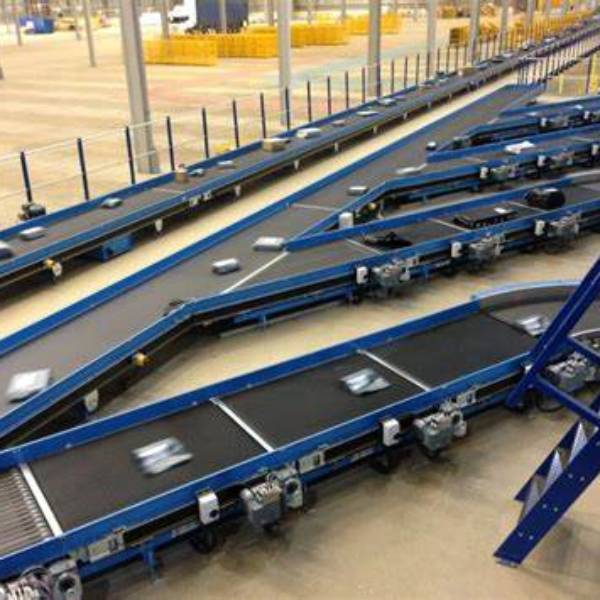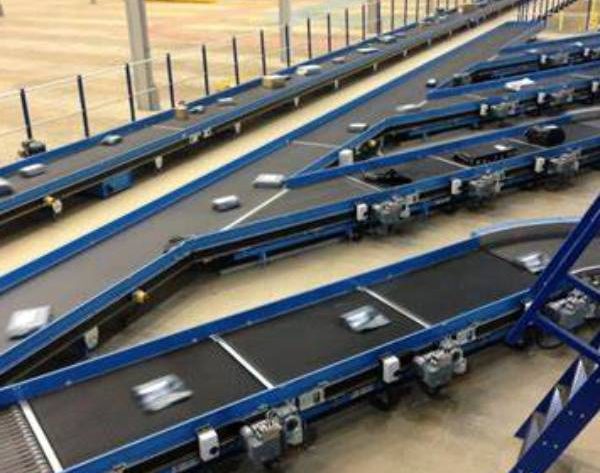What is a Conveyor Belt: Definition and Basics
A conveyor belt operates as a continuous loop of material. It transports items efficiently between fixed points. Industries appreciate its capability to streamline processes and enhance productivity. Factories rely on conveyor belts to move raw materials and finished products. Airports utilize them for handling luggage and cargo. Grocery stores employ conveyor belts to assist with checkout. These scenarios highlight the versatility of conveyor belts across different sectors. Their design allows for smooth and quick item movement, maximizing efficiency.

Benefits in Various Industries
Conveyor belts offer numerous advantages for businesses. They reduce manual labor, thereby minimizing human error. Automation increases overall productivity and efficiency. By using conveyor belts, manufacturers can achieve faster production rates. In logistics, these belts facilitate better workflow, allowing for timely deliveries. Retail environments benefit from quicker transactions, enhancing customer satisfaction.
Furthermore, conveyor belts can reduce workplace injuries by limiting heavy lifting. This innovation ensures workers remain safe and focused on their tasks. Different materials and configurations suit specific needs in diverse industries. Thus, conveyor systems vary to meet particular operational requirements. The adoption of conveyor belts continues to revolutionize how goods are transported. This technology contributes significantly to modern industrial practices. Ultimately, conveyor belts play a vital role in enhancing overall efficiency.
What is a Conveyor Belt: Historical Context
Early Development of Conveyor Belts
The history of conveyor belts began in the late 18th century. People designed the earliest belts using leather to transport goods efficiently. These initial designs had limitations, but they laid the foundation for future improvements. As the years progressed, manufacturers explored new materials for better durability.
Rubber and steel soon replaced leather, allowing for increased efficiency and strength. This evolution in materials significantly enhanced the transportation of goods. Businesses quickly recognized these advantages and adopted conveyor belts across various industries. The innovations did not stop there, as engineers continued to refine designs and functionalities.
The Industrial Revolution and Beyond
The early 20th century marked a turning point for conveyor technology. Henry Ford famously integrated conveyor belts into his automobile production line. This strategic decision transformed mass production and drastically cut manufacturing time. As automation gained traction, conveyor belts became essential components for numerous industries. From food processing to logistics, these systems improved workflow and productivity. Modern conveyor belts now come in various materials, such as plastic, metal, and fabric.

Many designs accommodate specific needs, like inclines and curves, making them versatile. Today, advanced technology provides increased control and monitoring capabilities for these systems. This adaptability allows industries to stay competitive in a rapidly changing market. Overall, conveyor belts play a crucial role in modern manufacturing and transportation systems. Their history reflects innovation and adaptation to meet evolving demands.
What is a Conveyor Belt: Types and Designs
Types of Conveyor Belts
Conveyor belts come in a variety of types, each suited for unique tasks. Flat belts serve many industries, particularly in packaging applications. Businesses favor flat belts due to their simple design and versatility. They can transport various items smoothly and efficiently. In contrast, modular belts excel when handling heavy loads. These belts consist of interlocking plastic segments that provide excellent support and stability. Companies choose modular belts for operations requiring strength and durability.
Industry Applications
Wire mesh belts find their place in food processing due to their ability to work in high temperatures. Many food manufacturers rely on these belts because they promote fast drainage and airflow. Consequently, they maintain cleanliness and efficiency during production. Moreover, different industries prioritize conveyor belts according to the type of goods they deal with.
For example, automotive manufacturers often use roller beds for heavy parts. These belts allow easy movement of bulky items throughout the assembly line. Ultimately, businesses carefully evaluate their operational needs. They consider factors such as load weight, size, and the environment. By selecting the right conveyor belt, companies improve efficiency and reduce downtime in their operations. Each type of conveyor belt brings its own advantages that can enhance productivity in various sectors.
What is a Conveyor Belt: Components and Functionality
Components of a Conveyor Belt
A conveyor belt comprises several key components that work together seamlessly. The most noticeable part is the belt, which transports materials from one point to another. While the belt is crucial, pulleys also play an essential role in its operation. These pulleys guide the belt, ensuring it moves in a controlled manner. Motors provide the energy required to keep the belt running. Without adequate power from the motors, the entire system would grind to a halt. Moreover, frames stabilize the machinery, preventing it from swaying during movement. Each part combines to create an efficient conveyor system working harmoniously.
Importance of Each Component
The importance of each component cannot be overstated. When one part fails, the entire system may face a disruption. For instance, if the pulleys wear out, the belt could slip or misalign. This misalignment can lead to costly delays and potential hazards in a working environment. Furthermore, regular maintenance of the motors ensures they run smoothly and efficiently.
Checking the frames for wear and tear can help identify issues before they escalate. Each component, therefore, requires attention to maintain overall efficiency. Understanding the role of each part can lead to better management of conveyor systems. By investing in maintenance, companies can prolong the lifespan of their machinery. Ultimately, a well-maintained conveyor belt system enhances productivity and minimizes downtime. What is my belt size? Proper maintenance of conveyor systems ensures they operate efficiently, just like understanding belt size ensures the right fit for optimal performance.

What is a Conveyor Belt: Advantages in Industries
What is a conveyor belt’s benefit? These systems offer numerous advantages in various industries. They increase productivity by speeding up transportation. Employees can focus on other tasks, which enhances overall efficiency. Furthermore, conveyor belts reduce the risk of injuries associated with manual loading and unloading. They also minimize the chances of product damage during transport. The result is a more effective and safer work environment. A luggage strap functions similarly to a conveyor belt, enhancing transport efficiency and reducing the risk of damage while ensuring safer handling of personal belongings during travel.
What is a Conveyor Belt: Maintenance Tips
What is a conveyor belt’s maintenance? Regular maintenance is crucial to ensure longevity and efficiency. Operators must check the belt for wear and tear. Lubricating the moving parts is essential for smooth operation. Monitoring tension levels also helps maintain the conveyor’s efficiency. Lastly, cleaning the belt regularly prevents material buildup. A well-maintained conveyor belt will last longer and perform better. Proper Range Belt Setup involves regular maintenance, including wear checks, lubrication, and cleaning, to ensure optimal performance and longevity.
What is a Conveyor Belt: Future Trends and Innovations
What is a conveyor belt’s future? The conveyor belt industry is evolving rapidly. Innovations include smart technology and automation. Companies now integrate sensors to monitor performance in real-time. These advancements boost efficiency and reduce downtime. Moreover, sustainability is becoming a focus, with eco-friendly materials and energy-efficient designs gaining popularity. The future of conveyor belts looks bright, with endless possibilities for improvement and adaptation.
In conclusion, understanding what is a conveyor belt expands our appreciation for its role in various industries. Its history, types, components, advantages, and maintenance tips paint a comprehensive picture. The future trends promise further innovation, making conveyor belts an integral part of modern logistics and manufacturing. Embracing new technologies will only enhance their effectiveness and sustainability.




